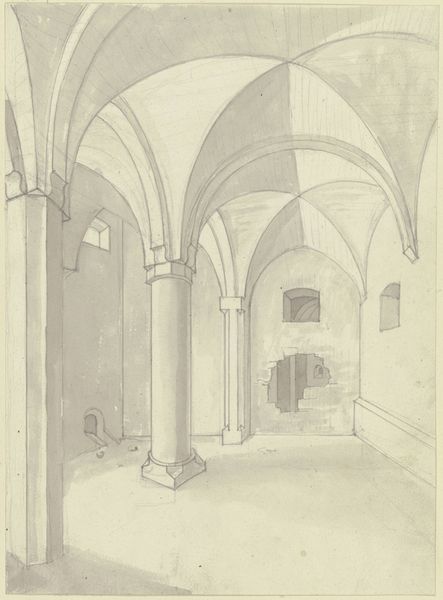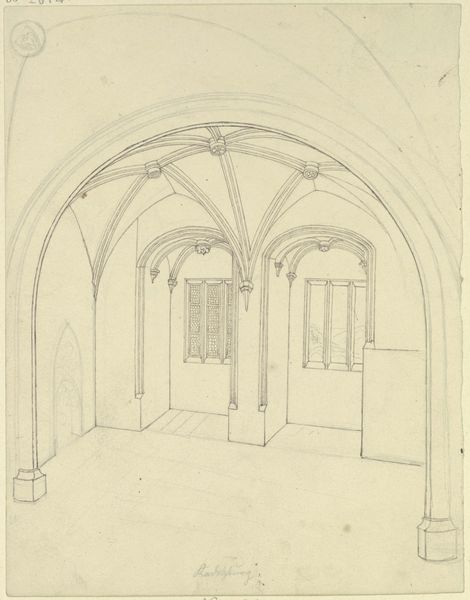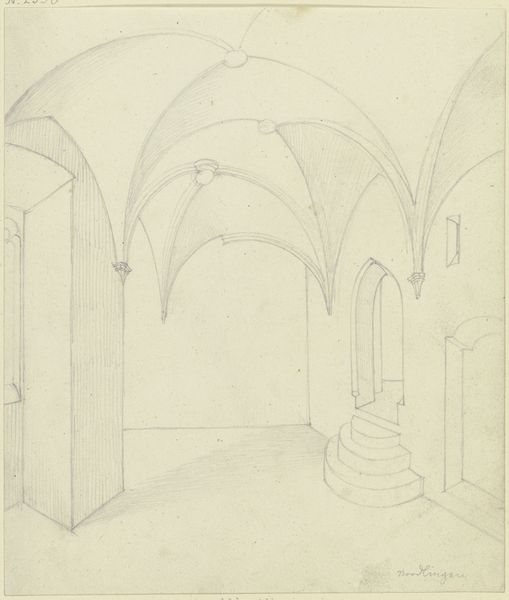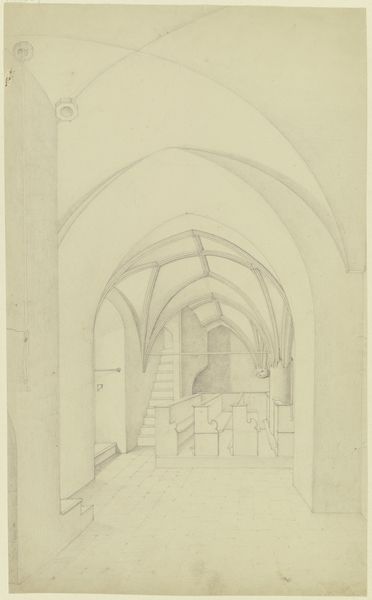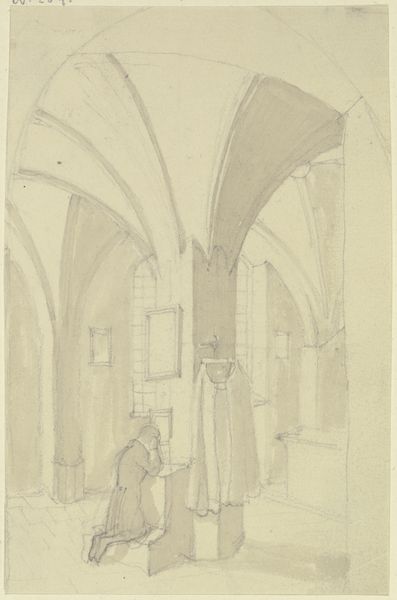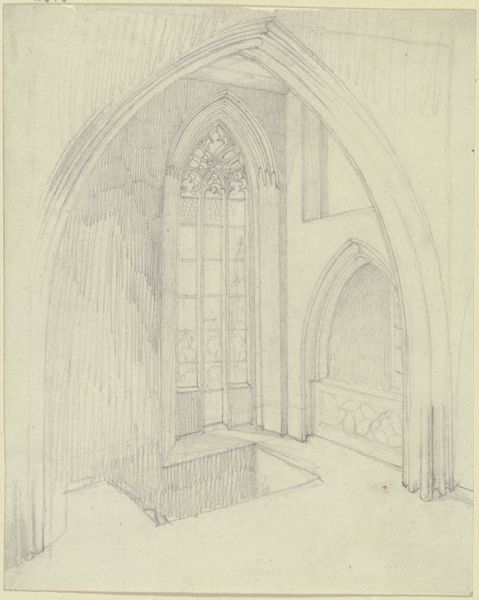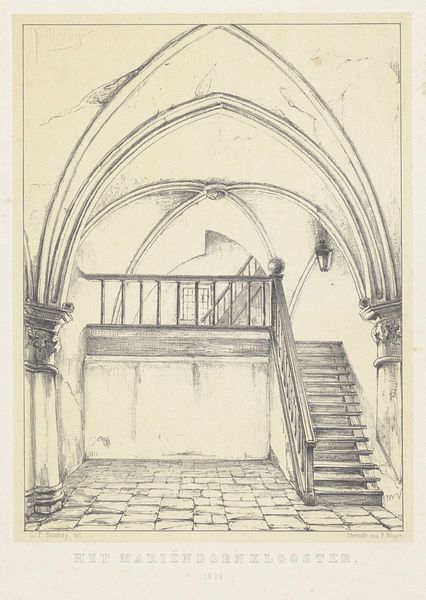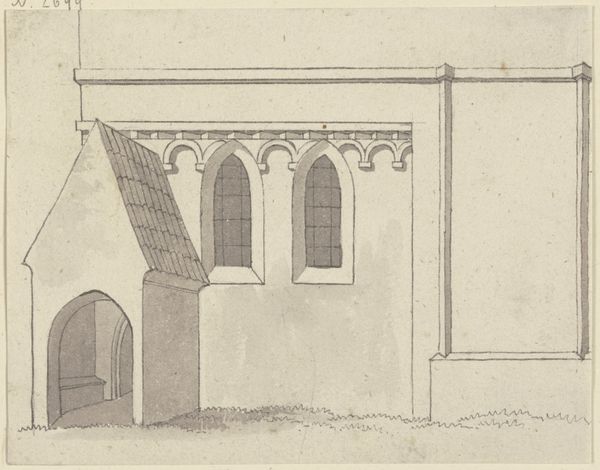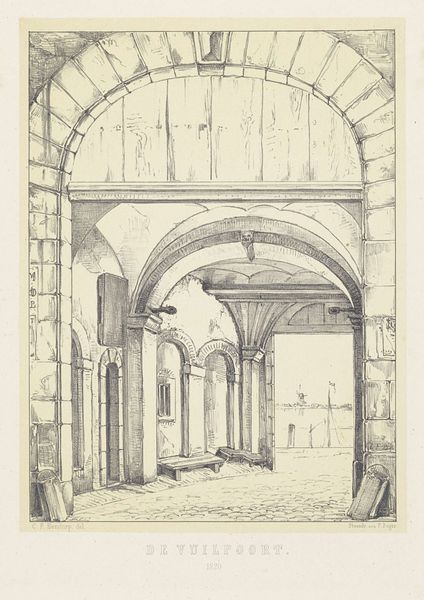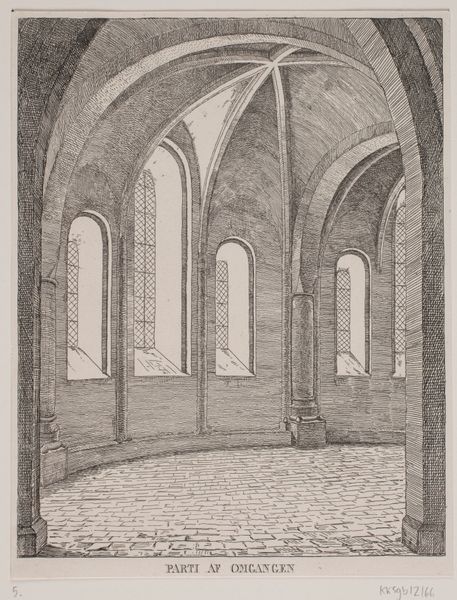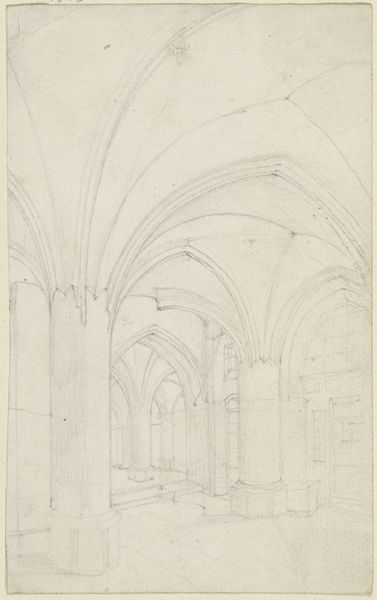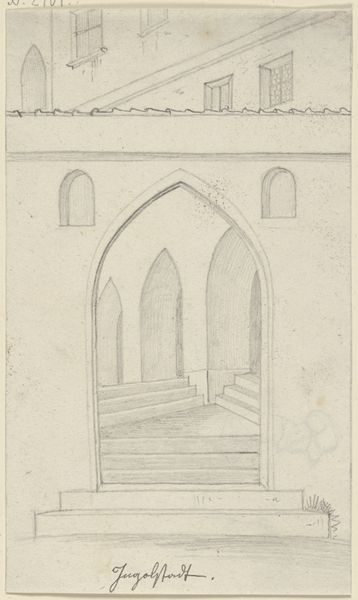
drawing, paper, ink, indian-ink, architecture
#
drawing
#
amateur sketch
#
aged paper
#
toned paper
#
light pencil work
#
16_19th-century
#
quirky sketch
#
pencil sketch
#
sketch book
#
paper
#
personal sketchbook
#
ink
#
german
#
indian-ink
#
sketchbook drawing
#
storyboard and sketchbook work
#
architecture
Copyright: Public Domain
Karl Ballenberger made this drawing of the Cloister of Nördlingen using graphite and grey wash. Graphite is a relatively soft form of carbon, known for its metallic sheen and slippery texture. As a drawing medium, it allows for a range of effects, from delicate lines to broader, shaded areas. The grey wash, likely an ink or watercolor diluted with water, adds depth and volume to the composition. Look closely, and you will see how Ballenberger used these materials to great effect in depicting the architectural space. The graphite defines the structural lines of the cloister, while the grey wash softly models the surfaces, accentuating the play of light and shadow. The drawing emphasizes the weight and mass of the architectural elements, highlighting the skill and labor required to erect such structures. By focusing on the materials and processes of architectural drawing, we gain insight into the cultural significance of the cloister and its representation. It allows us to appreciate the level of technical skill involved in its making, and challenges our understanding of the boundaries between fine art and craft.
Comments
No comments
Be the first to comment and join the conversation on the ultimate creative platform.
